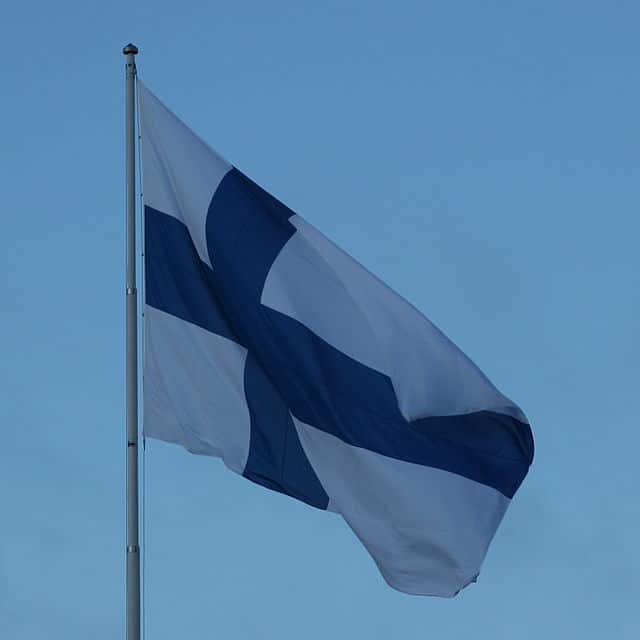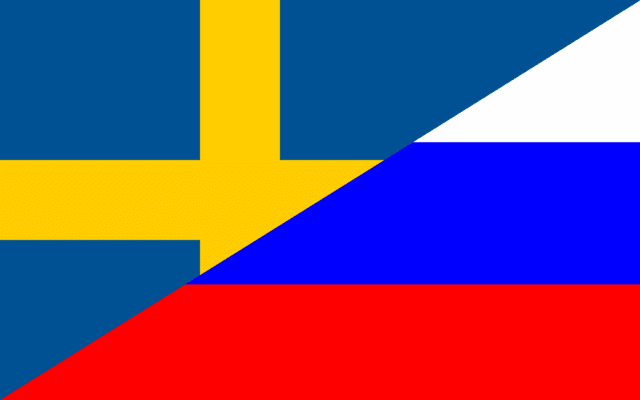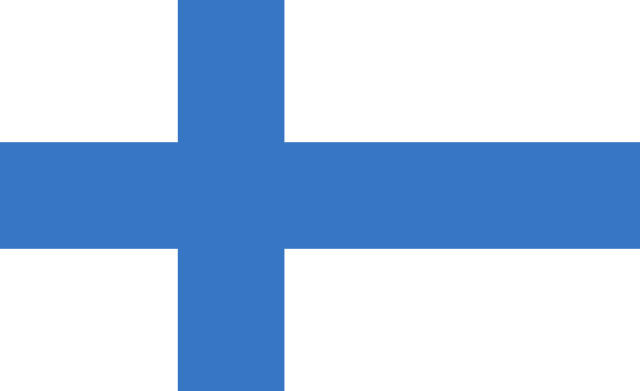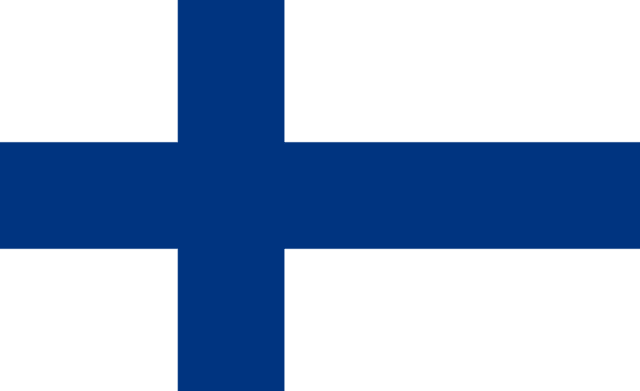Contents
Finland is a Nordic nation in Europe and is located in the world’s most isolated place. Dense forests and numerous water sources surround the nation, and it has borders with Sweden and Russia in the west and east, respectively.
Under Russian domination, Finland used unofficial flags and a coat of arms, but they didn’t declare their own national flag until 1917 when they gained independence. Throughout the year, Finland’s blue cross flag is flown to commemorate national holidays and other special days.
Let’s explore the interesting history and symbolism of the Finnish flag.
Characteristics of Finland
The Finland flag development and changes were influenced by its geographic location and the country’s profile. Finland has 5.6 million residents, which is a tiny country by international standards. While not extremely large, Finland demonstrates that greatness may be achieved regardless of size. They are listed as one of the top nations on the globe. Finland is praised for its accomplishments and is regarded as one of the safest, freest, and most stable countries in the world.
The World Happiness Report has rated Finland as “the happiest nation” for five years running. High standards of living, a lack of corruption, social support, and independence are all characteristics that contribute to this widespread feeling of happiness. Additionally, the 2021 United Nations development goals were nearly attained by Finland and other Nordic nations.
The population of Finland is spread out over an area of 130,678 square miles, with the majority of people residing in Helsinki, the nation’s capital and largest city. The Sami homeland is where the majority of Finland’s small population of officially acknowledged indigenous Sami people reside.
Since the majority of Finns speak Finnish, language plays a significant role in their national identity. Since Finland spent 600 years as a part of Sweden, Swedish is acknowledged as a language in Finland.
The time in Finland is UTC+2. In order to transition from standard time to daylight saving time, clocks are moved forward one hour nationwide in the summertime.

A Brief History of Finland
Finland finally attained its beautiful flag after it became independent. However, there were several variations when it belonged to Russia and Sweden. The first inhabitants of Finland territory were Sami people, according to archeological findings. Around 8500 BCE, during the Ice Age, they led a hunter-gatherer lifestyle. We don’t know what drew these tribes to Finland, but one might presume that the country’s abundant hunting and fishing kept them there.
Finland’s earliest written records date back to the 12th and 13th centuries. During this period in history, Catholicism spread throughout the pagan Baltic region. Notably, following the Northern Crusades in the 12th century, Sweden invaded Finland, taking their religion with them, and dominated the nation for hundreds of years.
Finland played a significant role in the intricate history of the nation as an essential component of the Swedish Kingdom. The Finns participated in numerous conflicts and battles throughout Sweden’s 700-year colonial rule, and their territory served as a crucial battleground between the Kingdom of Sweden and the Russian empire.
After being defeated by them in the Finnish War in 1809, Sweden ceded Finland to Russia. Finland was governed by them and turned into a Grand Duchy of Russia, operating independently within the union. After the 1917 Russian Revolution, they attained full independence.

Development of Finland Flag
The Grand Duchy of Finland received its own coat of arms in the sixteenth century. White flowers were strewn throughout the field, and a rampaging yellow lion with a sword was atop its crimson shield. Much of Finland’s autonomy was lost when it was ruled by Russia instead of Sweden in 1809. As a result, the Finns developed regional emblems to serve as a constant reminder of their history, language, and culture.
Finland Flag During the Russian Reign
Finland did not have its own flag prior to becoming an independent state. Instead, it used the Swedish and Russian flags. Patriotic Finns want a distinctive flag to symbolize Finland’s independence. However, there was a great deal of discussion concerning the flag’s design, and many other suggestions for its appearance were circulated. There was even a contest for artists to submit their best flag drawings.
The Russian government ordered that a Russian flag be inserted into the canton in 1910 as part of Finland’s Russification. This Finland flag was mocked as the “slave’s flag” (orjalippu), and the majority of Finns refused to fly it. Therefore, this was met with opposition. In its place, a triangular pennant without this change was flown, evading the flag’s directive.

Independent Finland Flag
The design of the Finnish flag was chosen in a competition soon after Finland achieved independence in 1917. Many different designs were submitted. The entries largely fell into two groups when it came to color, one utilizing the red and yellow colors from the Finnish coat of arms and the other using the current blue and white colors.
The coat of arms appears in the current Finland flag, the swallow-tailed state flag, and the flag of the president of the Republic of Finland, even though it wasn’t chosen as the country’s official flag.
The Siniristilippu is the name of the blue cross flag that is now flown across most of Finland. This 19th-century design, which was put out by eminent author Zacharias Topelius in 1862, satiated the nation’s need for a distinctively unique flag.
The blue cross, which was the most widely used option across the country, was eventually chosen as the official Finland flag in 1918. The flag has mostly not changed, although the blue color has been slightly deepened to prevent major fading brought on by bad weather.
The coronet was removed from the Finnish state flag in 1922, and the shield-shaped coat of arms was replaced with a rectangular design in 1978.

Finland Flag in Use
There are three primary variations of the Finland flag in use. All persons, groups, towns, and regions of Finland fly the standard national flag. The national flag may be flown anytime someone feels it is appropriate. The Evangelical Lutheran and Orthodox cathedral chapters, as well as non-naval state vessels, fly the rectangular state flag, which is used by the national and provincial governments of Finland.
The Finnish Defense Forces fly the swallow-tailed national flag, which doubles as the naval ensign. Only the designated individuals may fly the presidential standard and the command signals of the minister of defense, chief of defense, and commander of the Finnish Navy.
On designated days for flag flying, the flag is flown by every public institution and the majority of individuals and businesses. There are around 10 unofficial, but commonly observed, flag-flying days in addition to the official flag-flying days. Midsummer’s Day is considered Flag Day in Finland.
At least eight hours before sunrise and no later than nine hours after sunset, the Finland flag is raised. Regardless of nightfall, the flag is flown on Independence Day until 8 p.m. The Ministry of the Interior may suggest that all of the countries display the flag at half-height during occasions of major national catastrophes.
As part of a unique tradition, the flag is flown in Finland from 6 p.m. on Midsummer’s Eve to 9 p.m. on Midsummer’s Day. This serves as a visual representation of the fact that during Midsummer Night, no region of Finland experiences darkness.

Finland Flag Protocol
It is against the law in Finland to deface the flag or use it disrespectfully. A flag cannot be taken down from its pole without authorization. Anyone who violates these rules might be penalized for defiling the flag.
The use of the presidential standard or state flag without authorization is likewise prohibited by Finnish law, as is the insertion of any additional insignia on the flag. A flag that deviates from the legal specifications for color or shape cannot be sold. These are regarded as flag rule infractions and are punishable by fines.
Additionally, there are accepted guidelines for treating the flag with respect. The flag cannot be harmed or kept dirty. The flag must be dried inside after washing. A worn-out flag must be destroyed either by burning it (but not with the intention of defaming it) or by chopping it into bits that can no longer be identified as being from the flag. The flag cannot be submerged in the earth or the water.
Finland Flag Symbolism
The Finland flag, according to the eminent poet Zacharias Topelius, “represents the blues of our lakes and the white snow of our winter.” The white backdrop of the flag symbolizes Finland’s frequently harsh climate, while the blue cross represents the country’s vast, aquatic regions. The color white is a representation of Finland’s snow-covered, white winters. In the meantime, Finland’s numerous lakes and other bodies of water are represented by the blue cross.
Bottom Line
Up to its incorporation into the Russian empire in 1809, Finland was a part of Sweden before reclaiming its independence in 1917. Although the independent grand duchy of Finland under Russian dominion had its own emblems showing a lion, the country did not have any official flags portraying its national insignia. Independence was proclaimed by Finland on December 6, 1917, and shortly after this, the current Finland flag was introduced.